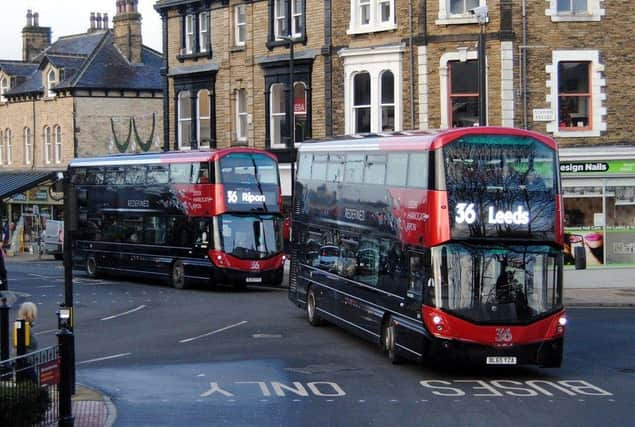OPINION: Myths about buses - and why three don’t often come at once - Alex Hornby, Harrogate Bus Company


We often receive a few suggestions and, after a recent discussion with a highly influential decision maker (who’ll remain nameless but admirably admitted he wasn’t a bus expert but wanted to understand the reasons for a few things), I thought it may be interesting for readers to understand why we - and other public transport operators - do the things we do. As ever, I’d welcome any comments - I’m sure they’d help us in our future thinking.
Firstly, why don’t you run little buses at quieter times of day - it would save you money?
Advertisement
Hide AdAdvertisement
Hide AdIt would do the opposite. The size of the bus is dictated by the maximum load it would carry at its busier times of day. There is often little to save in terms of fuel or energy by using a smaller bus, and we’d need to carry additional cost by having more buses in our fleet to swap over during busier or quieter times of day. The biggest cost we incur are salaries and wages of our colleagues - and these don’t change based on the size of the bus.
Why don’t you run buses to certain parts of town or rural communities even if by diverting existing journeys of your busier routes?
It’s difficult to design a timetable that suits everyone, which is why the most successful routes are ones which are frequent, and such frequency comes about by the need to serve volume. Consequently, serving communities with fewer residents is very difficult, and we would dilute the success of our popular routes if we made unwieldy diversions, just as it would if you decided to not take a direct route in your own car.
Why do buses sometimes not turn up?
Most of our buses do - well over nine out of ten journeys, even at the moment when we are doing our best to battle through what is a national shortage of drivers. Our vehicles are mechanical beasts - and like anything mechanical that works hard, they can break down too. But thankfully such instances are rare.
Why do buses come in threes?
Advertisement
Hide AdAdvertisement
Hide AdWell they don’t often but, on frequent routes, buses can ‘bunch’ because of they may hit red or green phases at traffic lights and one may be spending more time at stops - eventually the second catches up. Clever traffic lights can give priority to buses and help keep them spread apart.
Why do buses take longer at peak times or sometimes turn up late?
Could you confidently predict how long every car journey makes - even short, local journeys at rush hour in Harrogate? It’s just as difficult when trying to time buses too, which is why you hear us campaign for bus lanes and other priorities.
Why can’t you make buses cheaper?
We are a business that must make a profit so we can invest and improve. We therefore need to ensure our fares cover the costs of our operation (and these aren’t insignificant at a bus company - wages, fuel, insurance, vehicles, depots, marketing, training: the list goes on) and give us enough of a return to allow us to commit to future investment and fleet renewal. At the same time, we offer a range of day, week and longer unlimited travel tickets too to enable savings to be made rather than paying every time. I hope that gives you a bit of insight should you want to set up your own bus company one day - and whilst we don’t pretend to always know the answers, we’re always happy to be asked more questions!